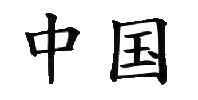China Beat Archive

China Beat Blog: Archive 2008-2012
Date of this Version
2-3-2009
Document Type
Article
Citation
February 3, 2009 in The China Beat http://www.thechinabeat.org/
Abstract
Alex Pasternak has written a couple pieces for China Beat in the past (such as “Beijing’s Olympic Forecast“), and so we were interested in his piece published a few weeks ago at The National, “Strange Loop: Is Rem Koolhaas’s gravity-defying Beijing monument the world’s most important building?“
Here is a snippet from the article, well worth reading in full:
It was only after the design emerged in public that the nicknames surfaced, and they were starkly devoid of any references to traditional Chinese culture. At the beginning, wei fang, meaning condemned building, was one oft-heard option. Later, “twisted doughnut”, “drunken towers”, and “big shorts” became the most popular sobriquets in Beijing. The latter, a reference to the building’s two rising towers, had special appeal to many online critics, young urbanites who despise CCTV: the word for “shorts” can also be translated as “underpants”.
“Our building is no longer a single square,” a young CCTV employee told me. “I don’t know what it symbolises. Desire? Ambition? Stupidity?” Later, he said plainly: “it’s a big hole in terms of content, and twisted in terms of fact.” I asked Chen Shuyu, an architect in Beijing, about the building. “Big mouth,” she said, “big lie.” The building’s central hole has inspired more vulgar suggestions.
Concerned that one of these monikers could stick, CCTV recently asked employees to vote for a more positive one, like “Harmonious Gate” or “New Angle”. According to one Shanghai newspaper, “Knowledge Window”, another option, quickly became a favourite among internet critics, largely because the Chinese name, zhichuang, is a homophone for “haemorrhoids”.
Included in
Asian History Commons, Asian Studies Commons, Chinese Studies Commons, International Relations Commons


Comments
Copyright February 3, 2009. Used by permission.